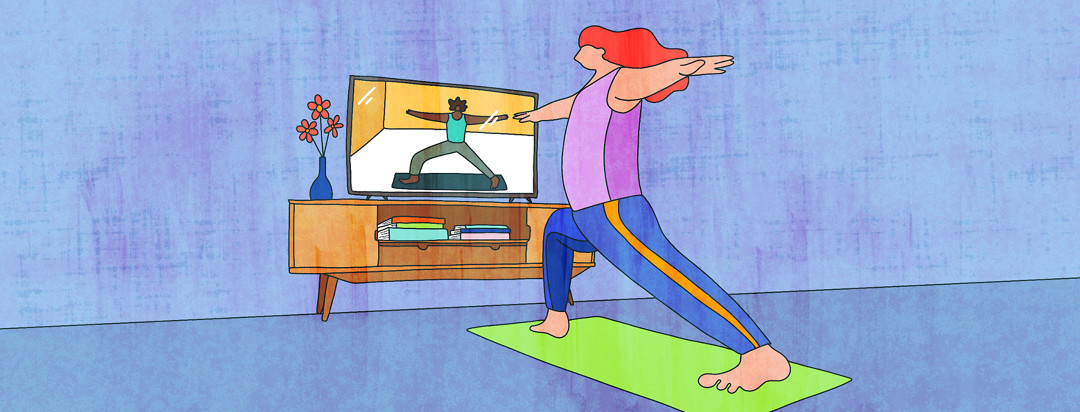Yoga is a Safe and Cheerful Companion to my AxSpA
I came across yoga a few years back now. I think I was looking for something a little spiritual and slow pace, which would help me to reconnect with my body after my diagnosis. Yoga is a unique experience for me. It gives me the power to be in the moment, present, focused. It has this quality that I can find when I do mindfulness.
For me, yoga brings together mindfulness and physical practice with a great sense of awareness of what is happening in my body.
I can modify my practice each day
What I really appreciated at the time when my inflammation was not under control, is that I could still practice yoga and therefore exercise on those bad days. This is one of the mottos of yoga: work with whatever is accessible on the day. We are not the same every day and we don’t have the same physical qualities and abilities, such as balance for example.
Therefore, in whatever shape I am on the day, it’s accepted, and I will work with this body for the yoga session. Yoga has been my refuge when AxSpA was giving me a hard time, and a great place to rediscover my body, work on my flexibility, and stabilize my mind. After a session, I feel no pain and I have great ease of movement. My muscles are relaxed, and I am peaceful.
Different styles of yoga
Over the years I have tried different styles of yoga. I went to classes of Kundalini which were focused on the breath and involved a long time siting on the floor. I was not so comfortable sitting still for a long period of time. I found the slow pace yoga that suits me, such as Vinyasa or Hatha yoga. It feels I have the time to transition from one posture to the next and register what is happening in my body.
I remember going to Vinyasa flow classes run by a teacher I really liked. One day she said that in yoga the breathing is the answer, to release tension, to work on flexibility, to focus the mind and take the practice to the next level. Another style of yoga I like is Yin yoga, which involves holding postures of deep stretching for longer period of time. I find it beneficial towards the end of the day, to slow down and stretch those achy muscles.
I now do yoga at home
After attending workshops on self-practice, I have started to practice yoga at home. I feel safe and confident about practicing yoga in my own time. Alternatively, there are a lot of resources online I can access too if I need a bit of a boost, to be connected with others while practicing. I love how I feel after a yoga session, energized and relaxed at the same time. I have improved my flexibility, my balance, and I have more strength in my muscles across the whole body. I have never injured myself in yoga.
But, be careful
However, there is one style of yoga I have been avoiding: hot yoga. No matter how tempting it is to be in a hot room that relaxes the muscles and makes the pain goes away, I did not feel comfortable exercising in such an environment. For me, there is a risk with a very warm body, to overstretch and put a strain on some joints, which for someone with AxSpA will be bad news. So, I have kept away from any hot yoga practices for that reason. I prefer to go to a steam room or sauna if I want some heat and sit or lie still to enjoy the warmth without moving.
Share your answer

Join the conversation